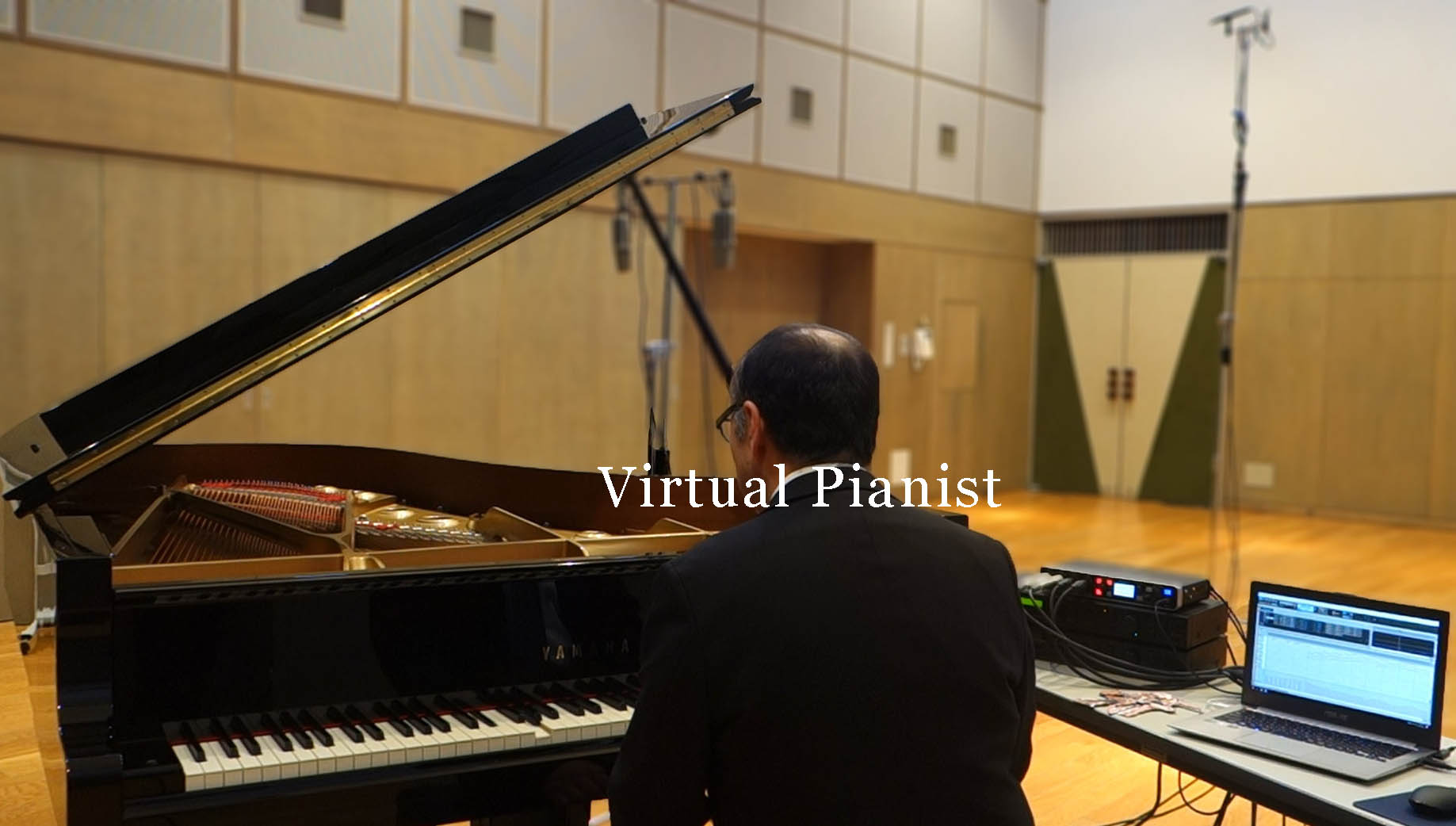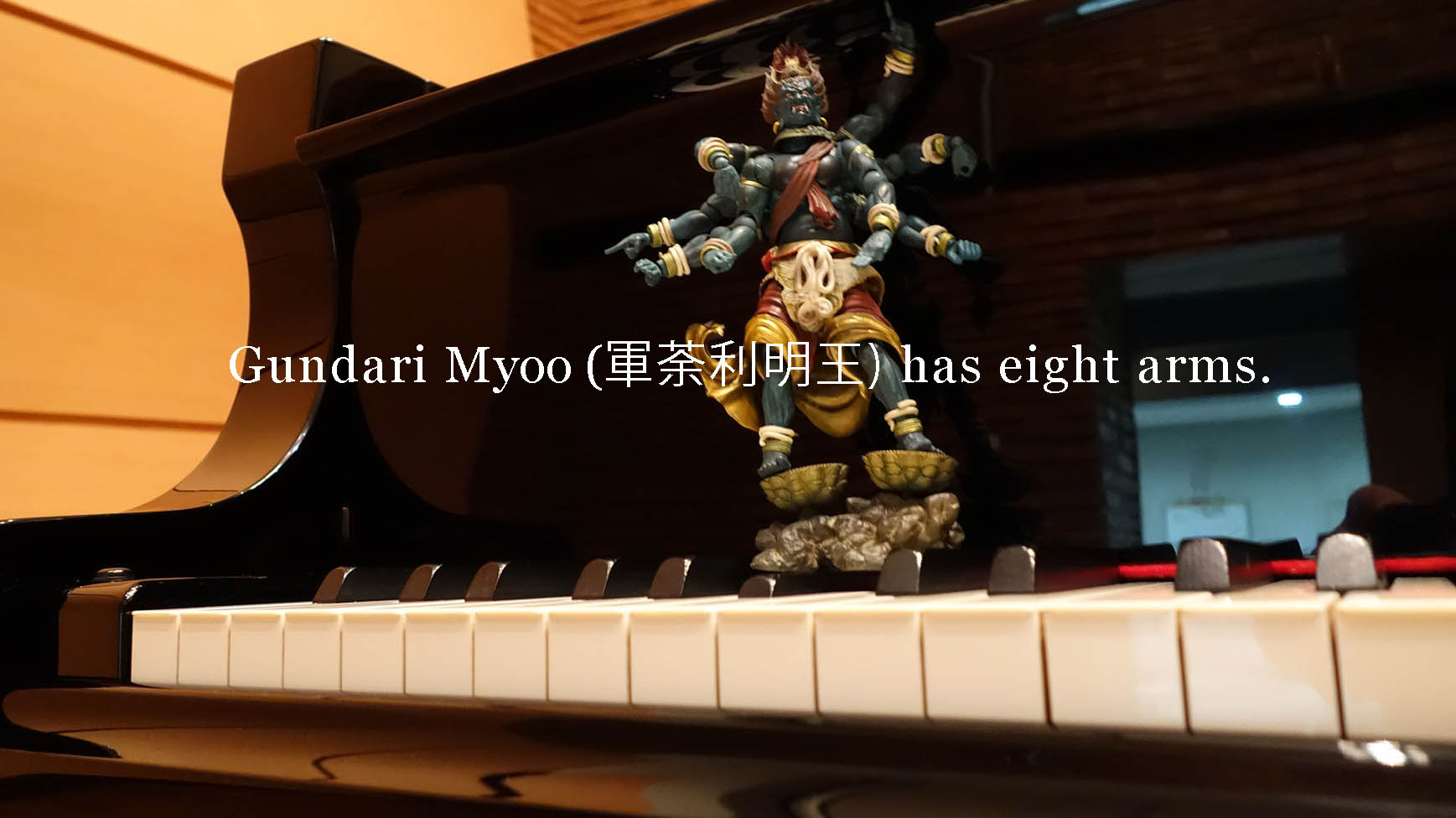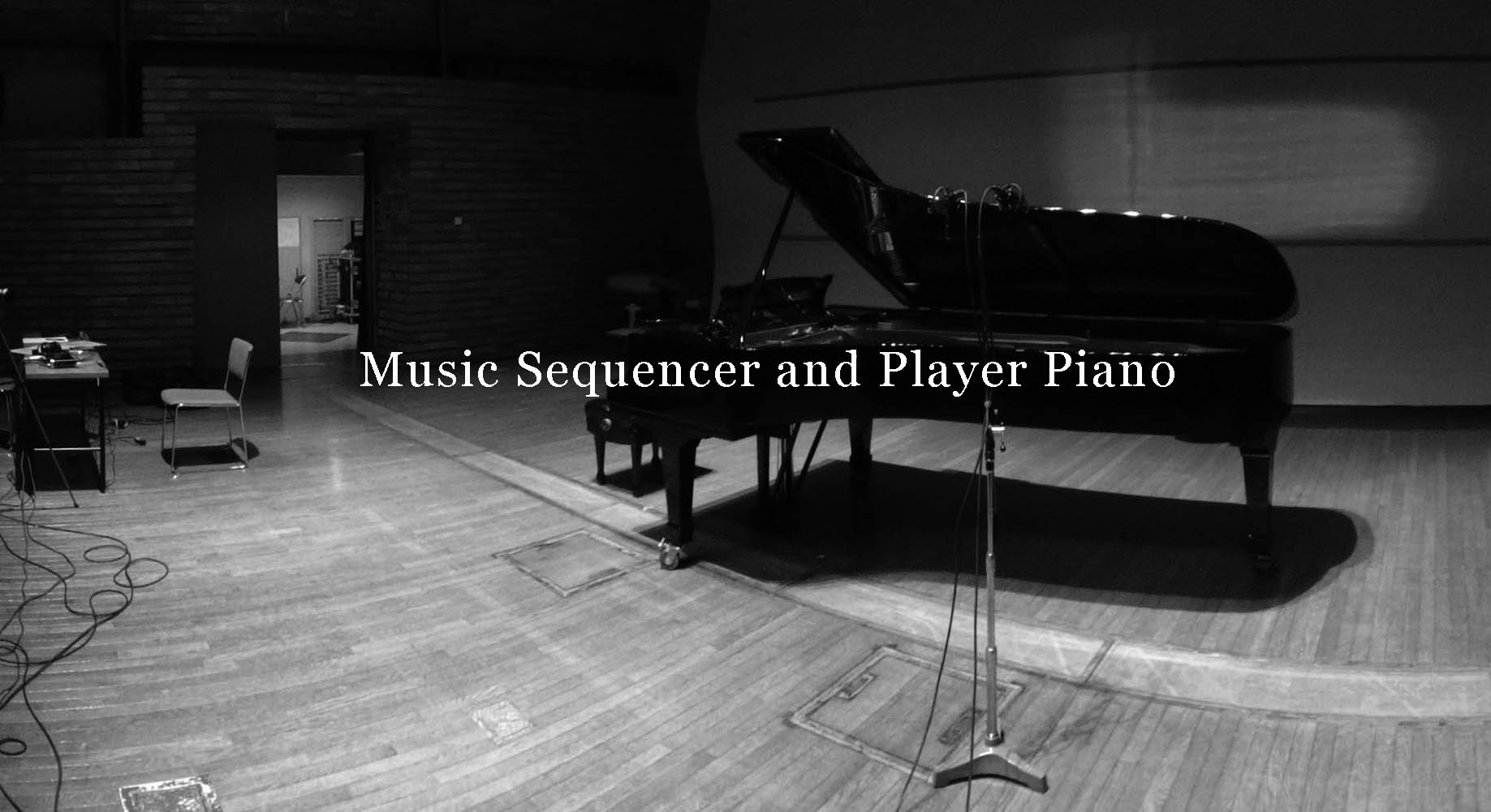What should you do when you hear a bad first performance? Feelings similar to the anger one feels when listening to a recording of an unknown composer's work played by a bad pianist. It is the feeling of one who has witnessed an act that is as close to a "crime" as possible. In such a situation, each person will think of the best way to deal with the situation. But the one that usually doesn't come to mind is to raise a clenched fist and say, "I'm going to let everyone hear a true performance of that work. Only Marc-Andre Hamelin and a few others can do that. What should you do if you have heard a bad first performance?
In my own way, I have been able to become the first audience for these works. I use a computer and an automatic piano, but they are just tools, it's how you use them that matters. There are two things you can do. One is to record, as I did, and the other is to support Nanasakov. When you think of "piano playing with a computer," there are two things you can do:
[1] You can record the music written in the score, or [2] you can record the music played on the computer.
[1] A human being inputs the note information written in the score as data, and the computer commands an automatic piano to play it.
[2] The computer reads the score itself and commands the automatic piano to perform at a level that can be called a "classical music performance.
In both cases, the process begins by faithfully inputting the sound data (i.e., pitch, intensity, and length of the sound) from the score into the computer. The method used to produce the final piano sound is also the same. As long as the logic regarding the expression of the performance is clear, there is not much difference between the two. If an automatic performance is based on the initial data input, people will say, "It is a mechanical sequence of sounds without any musical expression. So what is the difference between "mechanical" and "human"? The easiest way to find out is to start by putting yourself in a different position from the audience with respect to each human performance expression. Instead of listening to the music, we need to pay attention to when the sound disappears; we might even try conducting against the sound of an LP record or CD as it plays. Most of the time, however, you will be listening to a CD recording of a great performance by a well-known pianist, and you will be performing the ridiculousness of just moving your hands and arms and dancing to the music. Still, you'll catch something.
Yes, because no one plays the piano music I want to hear. I want to be the first listener, rather than the first life facing the music. It's not fun, it's almost painful. Still, we do it. And then comes the joy of the first listen. Good music starts with a beautiful piano.
In 1989, I would repeat this process over and over again once every three months or so, making another test recording with data that corrected the problems I had identified in the previous test recording, and then I would refine the data so that the performance would be as close to my ideal as possible. The accumulation of numerical senses obtained through trial and error during those days is still an asset to this day. About the instruments used When I started this project in 1988, the only system that could actually be used was the "Piano Player" by YAMAHA. There was a Bosendorfer automatic piano, but it did not support the MIDI standard, so it was not suitable for my purposes. I had no choice but to use a Yamaha C7 with a piano player for the Chopin-Godowsky recordings. I had both a piano player and a MIDI source for the Alkan minor etudes in 1998, but eventually I had to use the latter. The two Bach-Godowsky CDs released in 2000 and the 2001 Arcane CD were recorded with a YAMAHA C3 player. The instruments are so small that there is not enough room for bass, and the result was not as I had envisioned, but I think I still achieved a certain level of success.
As for sequencing MIDI sequencing software, Vision, Performer, and Logic were well-known, but you can use any other software you are comfortable with. For Chopin-Godowsky (1991), I used a MIDI sequence recorder called QX-3 by YAMAHA. After that, I mainly used Logic, but for the actual recording, I transferred the MIDI data to the QX-3 because I did not want the noise from the computer's built-in hard disk to be recorded as noise. After that, I couldn't let go of the QX-3, and ended up using it for a long time. Sequencing software does not need to be the latest version at all. It is just a tool (a faithful friend). What matters is what happens from now on. However, machines are sad things, and it was only after such a situation that I realized that they deteriorate as they are used, in other words, they no longer work the same way they did when they were new.
Moreover, as new models went on the market and stand-alone sequence recorders gradually disappeared from the market, I hurriedly looked around for a used one. Somehow, I managed to acquire one, but it was a very used machine, and it was only 50-50. I regretted that I should have bought a new one earlier as a spare machine. However, in October 2007, I suddenly had an idea and asked YAMAHA to repair it. They said, "We may not be able to repair it perfectly because we don't have all the parts," but it came back perfectly adjusted, just like that. Now I can have two perfectly working QX3s on hand. I am very happy and motivated to do it again. (Note 5/25/2009)
Three weeks ago, my QX3 hardware sequencer, which I have been using for many productions and overcoming many problems, finally stopped working properly. I had known for years that this day would come, and I was relieved to find that my other (almost) perfectly maintained QX3 was securely packed, sealed, and stored in a hard case in preparation for it. But when I thought about taking it out and continuing the process, I thought, "No, wait! If this one dies, I'm out..." I realized after all this time that I had to save this one.
I had to buy something because I only had Cubase and Logic, both of which are standard software, and both of which are more than 10 years old. After much hesitation, I decided to use the latest (at that time) DAW software "SONAR 8″," which was the most popular DAW software at Ishibashi Musical Instruments. It was my first time to use Roland DAW software, and there was no particular reason why I had to use SONAR, but I just wanted to make a big change if I was going to change my environment. The QX3 data is YAMAHA's own "E-SEQ" data, so other software cannot handle it unless it is converted to SMF (Music XML was not yet available). I converted the data to SMF. If the QY700 breaks, I will be in a tight spot, so I will have to convert the rest of the data in the not-too-distant future. (As of January 2019, I haven't done that because it's too much trouble.)
I found a number of works that I was interested in more than 10 years ago, for example, I wanted to listen to Bach's organ music on the piano, so I decided to play the bass of the three-stage organ score one octave lower on the piano. For example, I wanted to listen to Bach's organ pieces on piano, so I lowered the bass of the three-stage organ score by one octave and played it on the piano to create the atmosphere of Alkan's "Works for Pedal Piano or Three Hands" (23 pieces were test recorded in 2021). I found myself in a similar situation for a while, as if I was sorting out my belongings when I moved to a new house and found old albums and was thinking, "Oh, what is it? The QX3 floppy disk was for 2DD only and was no longer sold anywhere. However, I found an article on YAMAHA's website that says you can apply to purchase floppy disks for recording piano player software (Muma) through a dealer, so I purchased 20 floppy disks about 6 months ago. They are brand new and unopened, but they are supposed to be formatted for the piano player. Those of you who have been using word processors or old machines and need 2DDs may want to visit a YAMAHA branch before you bid too high at auctions. I forget the price but I think it was cheaper as it was in the old days.
Strength of Note I am not going to say something like "the second and fourth beats are played a little weaker", because that is not the case. In MIDI, the "strength/weakness" factor is based on the logic that "strength/weakness" is proportional to the speed at which the keys move down, and the same is true of the YAMAHA piano player. Therefore, when playing in pianissimo, the speed at which the keyboard moves is "slow. Therefore, the timing of sound emission is also delayed, so a buffer (time difference) of about 0.5 seconds is set between the command and its execution to cope with this. Human pianists control the weakest notes by using many different techniques. The most difficult to reproduce is playing a fast non-legato melody in pianissimo, in which the human pianist is clearly superior. However, at volumes above mp, the position of the two is reversed. The true value of the automatic piano is demonstrated in "heavy note passages," "octave passages," and "broad leaps" played at very high speeds. That said, this is a topic about the performance of the machine.
There are three main parameters that can be edited: the intensity of the sound, the tempo, and the timing of the sound. The first step in transforming an "inorganic string of sounds" into a "musical expression" is to edit the "data related to the intensity of sound. I often see people who edit "tempo fluctuation" first, which I will deal with in the next section. But in my experience, that is not a good procedure. One might say, "What about baroque music?" And. But we are dealing here with the automatic piano, and not with other instruments as a standard. We must represent this musical game with different chess pieces than a human pianist has. Of course, we could say that they have special pieces that they don't have. The "mechanical performance" at the speed specified by the metronome has become much more "musically expressive" after the first round of editing regarding the intensity of the sound. One might say that after repeated listening, one becomes accustomed to the "mechanical timing" of the piece.
The important thing here is to get a clear picture of the work as a whole at this stage. You will pay attention to the symbols for "expression" that the composer has specified on the score, but you must also use your imagination to picture the final result in your mind, using your imagination for other things that are not mentioned. What part of the piece does the composer mean by the tempo "Tempo=76″ or "Tempo=130″? The composer may be referring to a melody that extends over several bars, but even within a single bar, changes in speed are occurring. We need to tell the computer, "What is tempo?" The computer needs to be told, "What is tempo? Tempo" is actually the time it takes for the next note to appear. If it is a constant rate, the performance is what is called "mechanical.
Is it a bad thing to have a "fixed rate"? No, it is not. However, human pianists do not play the piano at a "certain rate. In fact, it may be more correct to say that they "can't." The reason people feel "mechanical" is not due to a sense of disgust when faced with what humans cannot do, but due to a feeling of suffocation from not even having the time to breathe correctly. We have now come to the stage presented at the beginning of this page, where we listen to the sound of a record or CD and conduct to it. Here, a little preparation is necessary. First of all, you must understand the words for facial expressions such as "accelerando," "dolce," "espressivo," and "appassionato," and teach them to the computer. Even if you try to teach it by singing and gesturing, it will not be able to communicate with you, because it is only a faithful machine, a tool. As a conductor, you are in charge of giving detailed orders to the orchestra of reproducing player pianos, which are progressing at a "fixed rate".



